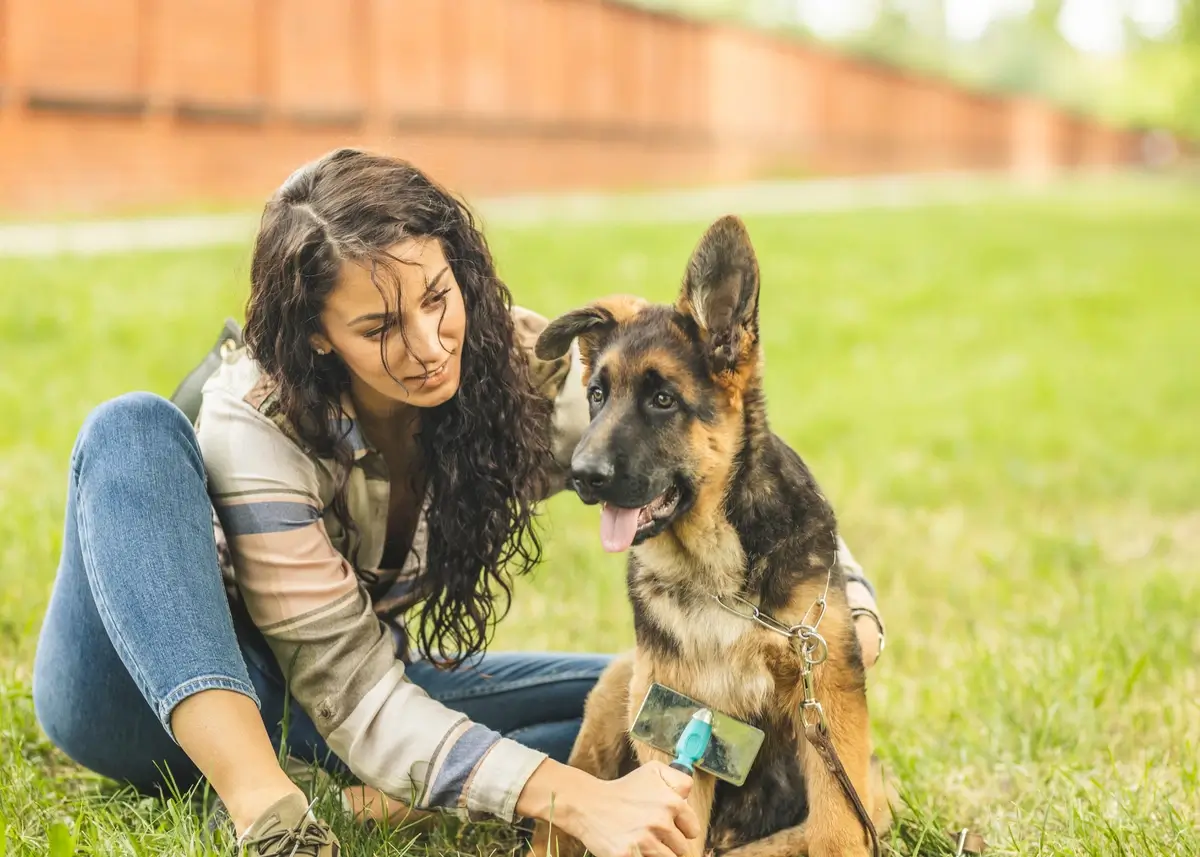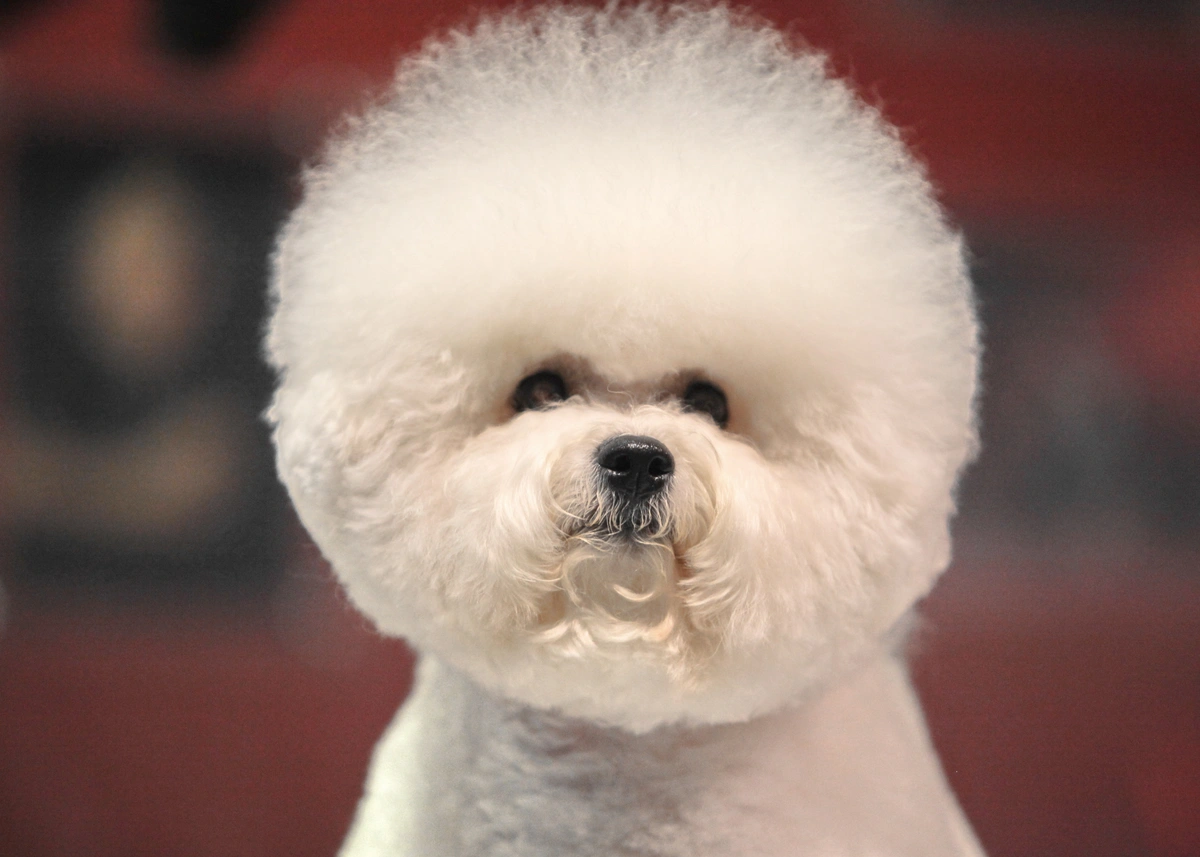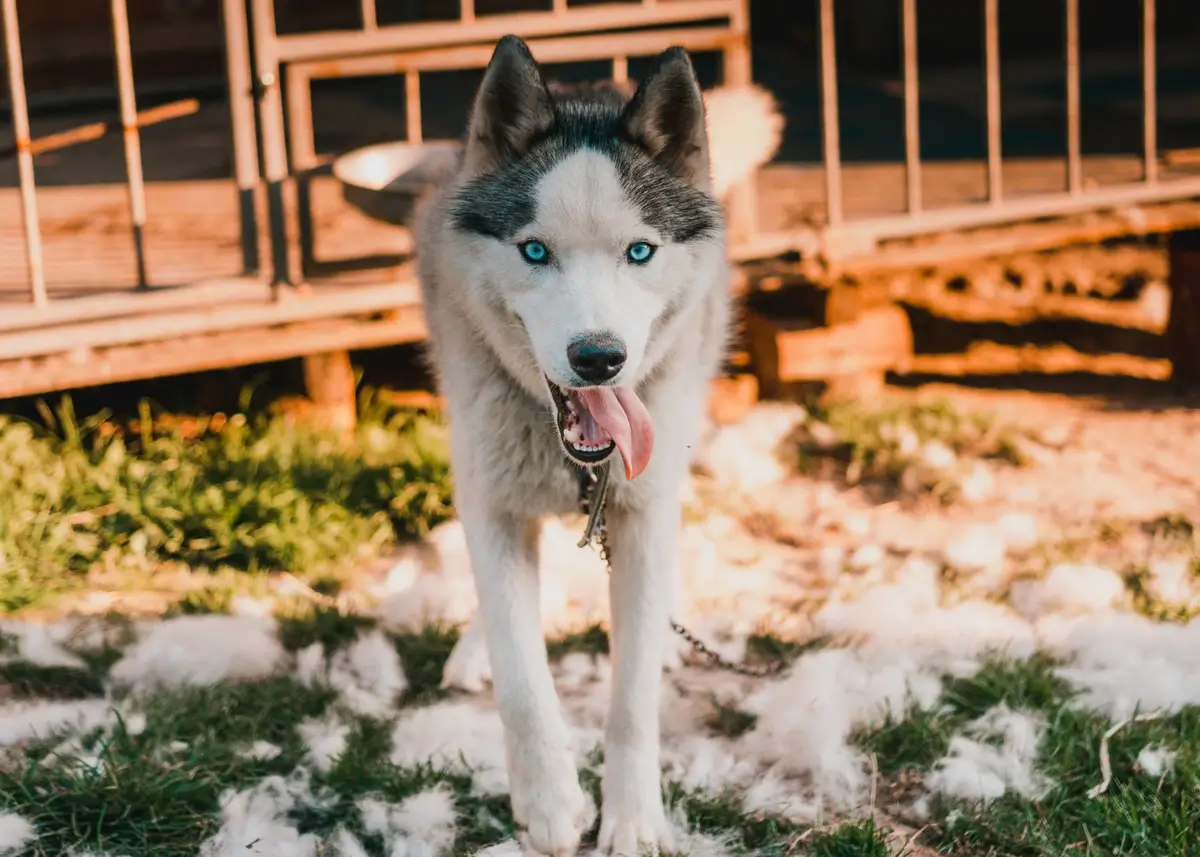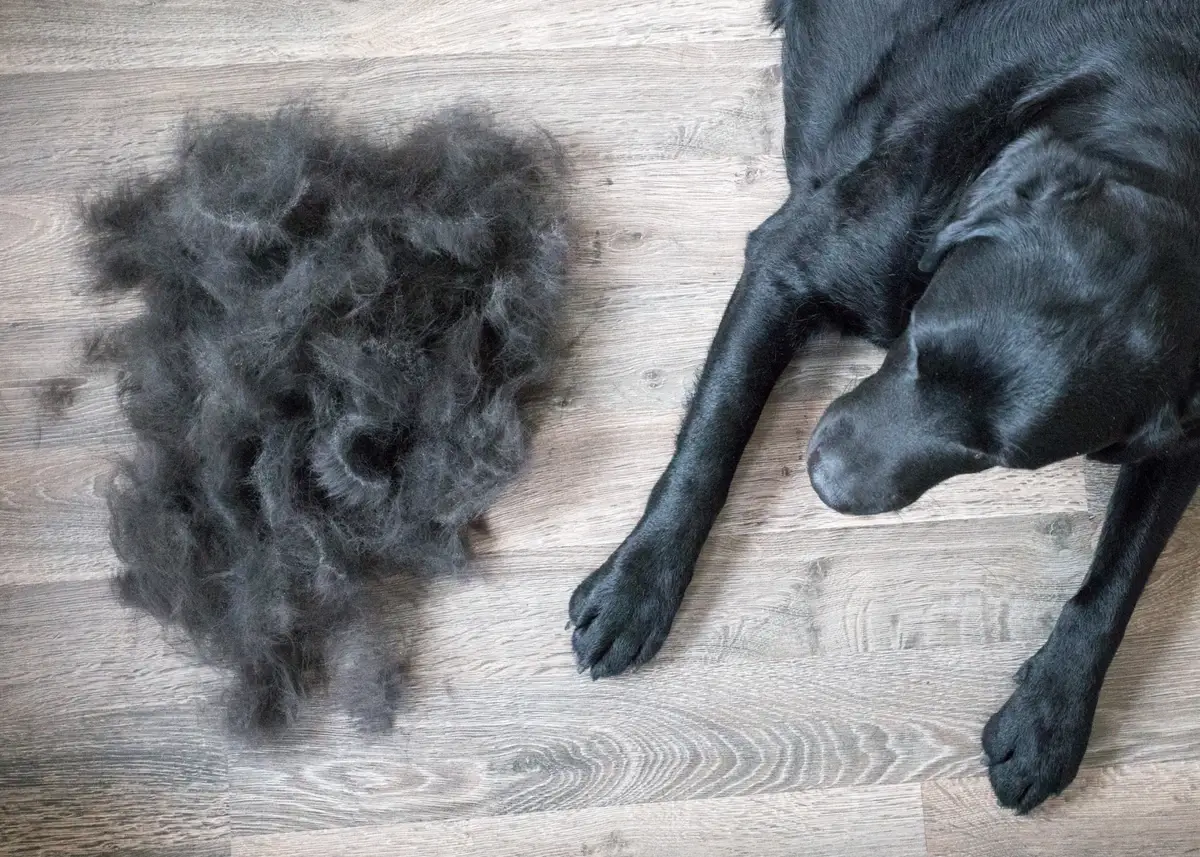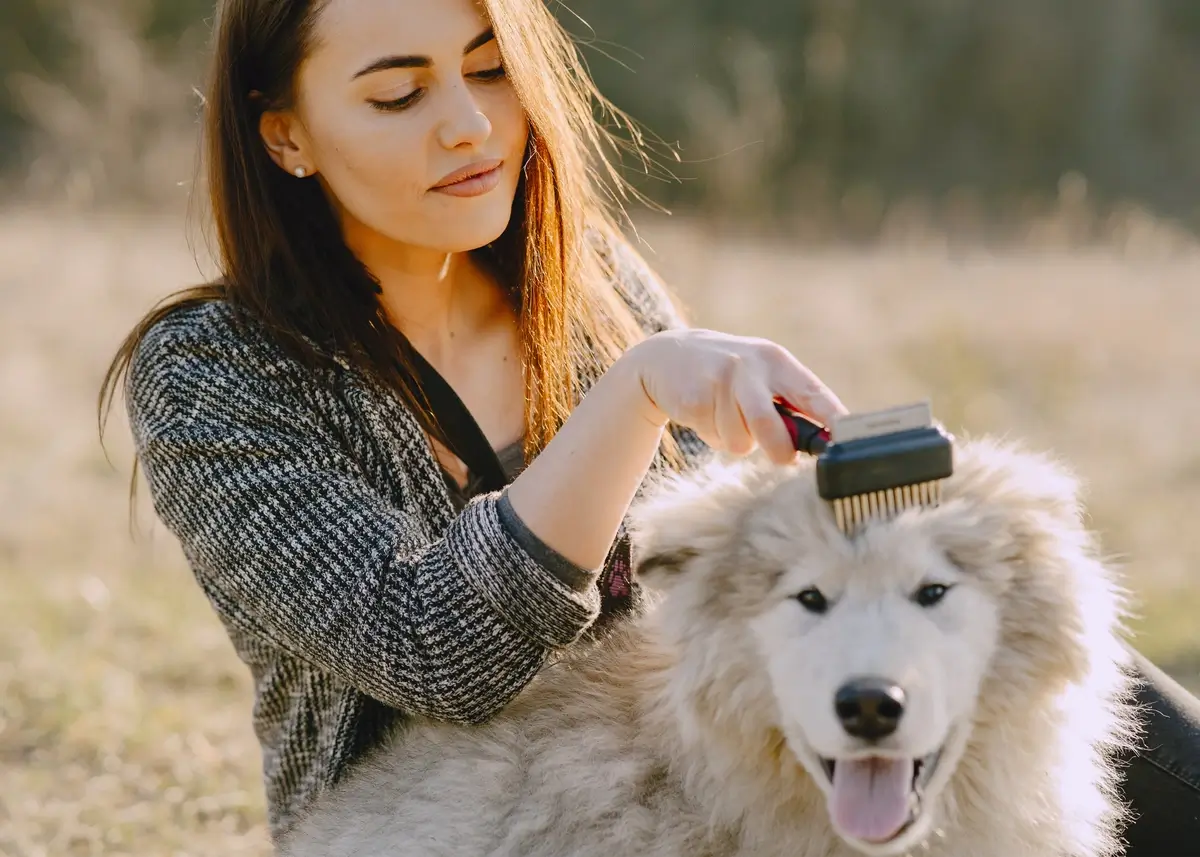Ah, Spring is in the air! Bees buzz around from flower to flower, and birds are busy flitting around building nests and feeding their young. Wait a minute – what do you see in the bird’s nest? It sure doesn’t look like twigs…Oh my goodness, that’s my dog’s hair! And what’s that floating around inside when a beam of sunlight paints my hardwood floors? It’s dog hair lazily spinning around as it gracefully floats, collecting in tumbleweeds of hairballs.
If your dog sheds enough hair to make an entirely new dog, then this blog is for you! Find out why your dog sheds so much and what steps you can take to manage dog hair.
Which Dog Breeds Shed the Least?
Some of you may be saying, “What do you mean? My puppy hardly sheds, if at all!” Well, you may want to read some of our other blogs while you laugh and watch the rest of us search for the perfect pet vacuum or walk around with lint rollers in our purses, cars, or work bags!
The dog breeds that shed the least grow human-like hair instead of fur. While it’s possible for dogs with hair to shed, it’s nowhere near the volume that puppies with fur do.
Here are some dog breeds that are low-to-no-shedders:
- Standard Poodles, Mini Poodles, and Toy Poodles
- Any Poodle mix (typically called -doodles or -poos)
- Yorkshire Terriers
- Maltese
- Chinese Crested
- Bichon Frises
- Lagotto Romagnolos
- Coton de Tulears
- Afghan Hounds
- Brussels Griffon
- Soft Coated Wheaten Terriers
- Cairn Terriers
- Xoloitzcuintli
- Italian Greyhounds
- Shih Tzus
- American Hairless Terriers
- Havanese
- Bedlington Terriers
- Portuguese Water Dogs
- Giant Schnauzers, Standard Schnauzers, and Mini Schnauzers
Hair v. fur
Most of us probably use the phrase “dog hair” when we actually mean “dog fur.” But did you know that some dog breeds grow hair and others grow fur? Let’s explore the differences between dog hair and dog fur.
Both dog hair and dog fur are technically both made of keratin, a protein that helps form your hair, nails, and skin. However, they have distinct differences pertaining to thickness, length, the density of hair follicles, trapping dander, and more.
Another similarity between dog hair and dog fur is they both follow the same growth stages. The anagen phase is when hair or fur is in its active growing phase, and the exogen phase is when puppies shed their hair or fur.
Fur is denser and shorter than hair. This means there are more follicles per square inch than hair, so that’s more chance to shed. They also don’t stay long in the anagen phase, moving on more quickly to the exogen stage than a puppy with hair.
On the other paw, puppies with hair stay in the anagen phase much longer, which is why puppies with hair need regular trips to the groomer for haircuts and trims. They don’t shed nearly as much when they do reach the exogen stage.
Double-coated vs. single-coated puppies
Your puppy will either have a double coat or a single coat. Thank goodness there is not a dog out there with a triple coat!
When a puppy has a double coat, that means there is a coarse, outer layer of hair made up of rough, thick, weatherproof guard hairs. There is also an undercoat consisting of lofty, soft, shorter fur. Together, the double coat protects your puppy from the elements and helps regulate your puppy’s temperature by trapping either cool or hot air.
Dogs with double coats tend to shed the most since they have not one, but two layers rather than a puppy with a single coat. They’re usually some of the fluffiest dog breeds out there, and several of them have a working or sporting origin that required a hardy coat for rugged environments. Now that most of them are used more for human companionship rather than employed as dogs with jobs, their genetics haven’t quite gotten the memo that Fido is not hauling carts up and down mountains in terrible weather anymore.
However, don’t assume that puppies with single coats aren’t heavy shedders. Puppies with single coats that only have one layer of growth can still have you vacuuming daily.
Hypoallergenic puppies
Puppies with hair coats are considered hypoallergenic puppies. While there is not a true dog breed that is 100% hypoallergenic, the reason why puppies with hair coats are great for people with allergies is not because of the hair, but because of the lower amounts of dander shed.
Dander is made up of tiny flakes of dead skin cells shed by all animals and is often called dandruff in humans. Dander contains proteins that can trigger allergic reactions.
All dogs have dander – even the ones considered hypoallergenic. However, puppies with hair-like coats release less dander because the dander is contained during the anagen phase and isn’t as airborne as a puppy that sheds fur. In addition, some puppies with hair coats have tight, dense curls, which trap even more dander.
Okay, But Which Dog Breeds are Heavy Shedders?
You may be wondering, “Which dog breeds shed the most?” You have probably guessed by now that fluffy dogs with double coats win most of the Shedding Awards, but there are some single-coated, shorthaired dogs that make our list, too.
Here are some heavy-shedding dog breeds that will keep your vacuum busy:
- Bernese Mountain Dogs
- Golden Retrievers
- Great Pyrenees
- German Shepherds
- Siberian Huskies
- Rottweilers
- Alaskan Malamutes
- Basset Hounds
- American Eskimo Dogs
- St. Bernards
- Akitas
- Old English Sheepdogs
- Chow Chows
- Beagles
- Belgian Malinois
- Australian Shepherds and Mini Australian Shepherds
- Pembroke Welsh Corgis, Cardigan Welsh Corgis & American Corgis
Is it Normal For Dogs to Change Color When They Shed?
The short answer is yes!
You may have fallen in love with a puppy of a certain color, only to find out your dog looks much different a few weeks or months later, especially during that first year. This is totally normal, and it doesn’t mean you received the wrong puppy in the picture or that there’s something wrong with your puppy.
In fact, you may have seen our disclaimer about a puppy’s coloring, which states:
***Dogs may change color naturally as they mature due to many factors such as genetics, hair type, losing puppy fur and changing to the adult coat, pigmentation, hormonal changes, seasonal changes, shaving, etc. Color changes are expected and can occur quickly and at any time. We cannot guarantee a dog's permanent coat color for these reasons.
While puppies are born one color, as their hair grows in and they transition from puppy to adult hair, different colors can be reflected in their coat. Understanding why puppies’ coats can change colors can help you prepare for a normal event in some dogs as they grow from puppies to adult dogs.
What Does it Mean When Dogs “Blow Their Coat?”
With Spring and Fall come changes in the air – and also your puppy’s coat growth. While puppies can shed year-round, there are two times of the year that puppies go through a period of really heavy shedding in order to prepare for the change in temperature. These seasonal shedding events are referred to as dogs “blowing their coat,” or shedding the underlayer of their coat.
The hair that grows in Spring is not the same as the hair that grows in Fall, but the fur will end up in all the same places, we promise! Spring hair consists of thicker, shorter guard hairs that allow a cooling effect for maximum airflow, while Fall hair grows more in the secondary layer to keep that warmth close to the body with longer, finer guard hairs.
While every puppy is different, you can expect these biannual coat-blowing sessions to last 2-4 weeks for each blowout event.
How Can I Reduce Shedding In My Puppy?
Owning a dog means you’ll be taking care of their coat for life. A well-kept, glossy, healthy coat can have your pup always looking dapper and feeling its best.
While you can’t stop natural shedding events, you can certainly help along the process with a few steps.
Pay attention to your puppy’s nutrition
When puppies have a poor diet, it affects more than just their insides. As the skin is also an organ, a bad diet will result in coat problems.
Feeding nutrient-rich, healthy puppy food containing vitamins and minerals that are fantastic for hair growth can help cut down on brittle, dead hair.
Visit the vet regularly
In addition to a poor diet, did you know some puppies can shed their hair due to illness, skin conditions, or hormonal changes? Make sure you are taking your puppy to the vet for those well visits, and share any concerns about your dog’s coat with your trusted licensed veterinarian.
Select the right dog grooming tools
Choosing the right dog brush can make a world of difference in removing dead hairs. Be sure to brush your dog at least once a week, but your dog breed may require more frequent brushing to get a handle on all that hair.
Bristle brushes are great for short-haired dogs, as they help remove hairs while distributing natural oils throughout your puppy’s coat for a natural, healthy shine.
Rubber gloves can also help remove hairs while providing a massage-like effect for your pooch.
Deshedding tools and rakes can penetrate through both layers of a double-coated puppy, but be sure to not overuse the tool and strip too much of the coat.
Stay on top of regular grooming
Whether you visit a professional or opt for DIY dog grooming, all dogs will need regular care and upkeep. Regular baths keep the coat clean, and a tidy trim portrays a neat, well-maintained appearance. Groomers can use special products to encourage deshedding and have special undercoat blowers that can remove undercoat tufts of hair with powerful air blasts.
A word of caution – never shave a double-coated dog! Your puppy will need both layers working together to protect its skin. When you remove those layers, it can directly affect your puppy’s health and inability to stay warm or cool enough.
Find a New Furbaby at Pawrade
Whether your dog is hairless or the top shedding dog breed, we all love our furbabies regardless of their coat and level of shedding. At Pawrade, we know just how to find reputable breeders through our rigorous selection process so you can focus on picking out your new four-legged companion without worrying about puppy scams or puppy mills. Search our puppies for sale to bring home a new furry friend!
